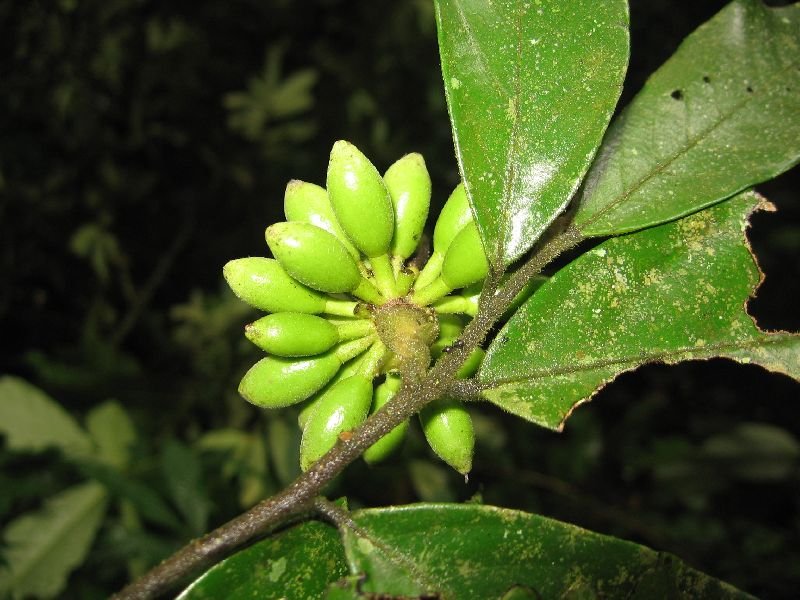NAME: Eugenia malaccensis
FAMILY: Myrtaceae (Myrtle family)
COMMON NAMES: Malay Apple, Rose Apple, Mountain Apple
LOCAL NAMES: Jambu Merah (Indonesia), Jambu Bol (Malaysia), Chomphu Daeng (Thailand)
MORPHOLOGICAL DESCRIPTION: Eugenia malaccensis is a tropical evergreen tree that can reach heights of 10-20 meters. It has a dense, rounded crown with glossy dark green leaves. The tree produces small, fragrant flowers that are pale green or white in color. The fruit of Eugenia malaccensis is a round or pear-shaped berry that varies in color from green to deep red. The flesh is crisp and juicy, with a mild, sweet-tart flavor.
USEFUL PART(s): The fruit of Eugenia malaccensis is the most useful part of the plant.
GENERAL USES:
Culinary Use: The fruit of Eugenia malaccensis is edible and commonly consumed fresh. It can be eaten raw or used in various culinary preparations, such as salads, desserts, and beverages. The fruit has a refreshing taste and is often compared to a combination of apple and pear.
Medicinal Use: In traditional medicine, different parts of Eugenia malaccensis, including the leaves and bark, are used for their potential medicinal properties. They are believed to have antimicrobial, anti-inflammatory, and antioxidant effects. Infusions or decoctions of the leaves and bark are used to treat various ailments, such as diarrhea, fever, and skin conditions.
GEOGRAPHIC DISTRIBUTION: Eugenia malaccensis is native to Southeast Asia, particularly Malaysia, Indonesia, and the Philippines. It is also cultivated in other tropical regions worldwide, including India, Sri Lanka, Hawaii, and parts of Africa and South America.
WHY IS IT GREEN? Eugenia malaccensis, like other plants, appears green due to the presence of chlorophyll in its leaves. Chlorophyll is a pigment that captures sunlight during photosynthesis, the process by which plants convert light energy into chemical energy. Chlorophyll absorbs red and blue wavelengths of light while reflecting green light, giving plants their characteristic green color.
ENVIRONMENTAL IMPACT: Eugenia malaccensis can have positive environmental impacts when cultivated sustainably. As an evergreen tree, it contributes to carbon sequestration and provides habitat for various wildlife species. However, unsustainable land-use practices or habitat destruction can have negative environmental consequences, such as loss of biodiversity and soil erosion.
FUN FACT: The Malay Apple, Eugenia malaccensis, is highly regarded for its cultural significance in Southeast Asia. It is often associated with festivals and traditional ceremonies. In some regions, the fruit is considered a symbol of good luck and prosperity. Additionally, the tree's attractive flowers and colorful fruit make it a popular choice for landscaping in tropical gardens.
Further Reading:
"Eugenia malaccensis: Malay Apple." By F. S. Villanueva.
"Traditional Uses, Phytochemistry, and Pharmacological Properties of Eugenia malaccensis: A Review." By N. H. Nordin and others.
"Fruit Trees in the Tropics." By K. C. Lim.























